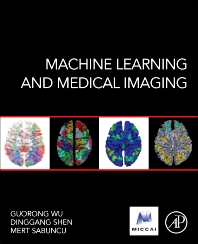Books in Computer science
Books in Computer science
The Computing collection presents a range of foundational and applied content across computer and data science, including fields such as Artificial Intelligence; Computational Modelling; Computer Networks, Computer Organization & Architecture, Computer Vision & Pattern Recognition, Data Management; Embedded Systems & Computer Engineering; HCI/User Interface Design; Information Security; Machine Learning; Network Security; Software Engineering.
- 1st Edition
- August 24, 2016
- Christophe Lalanne + 1 more
- English
- Hardback9 7 8 1 7 8 5 4 8 1 4 2 0
- eBook9 7 8 0 0 8 1 0 1 0 8 4 6

Biostatistics and Computer-based Analysis of Health Data using Stata
- 1st Edition
- August 23, 2016
- Denis Constales + 4 more
- English
- Hardback9 7 8 0 4 4 4 5 9 4 8 5 3
- eBook9 7 8 0 4 4 4 5 9 4 8 4 6

Advanced Data Analysis and Modelling in Chemical Engineering
- 1st Edition
- August 20, 2016
- John Sammons + 1 more
- English
- Paperback9 7 8 0 1 2 4 1 6 6 5 0 9
- eBook9 7 8 0 1 2 4 1 6 6 3 9 4

The Basics of Cyber Safety
- 1st Edition
- Volume 103
- August 19, 2016
- English
- Hardback9 7 8 0 1 2 8 0 9 9 4 1 4
- eBook9 7 8 0 1 2 8 0 5 1 6 7 2

Advances in Computers
- 1st Edition
- August 19, 2016
- D.W. Loveland
- English
- Paperback9 7 8 1 4 9 3 3 0 5 5 1 3
- eBook9 7 8 1 4 8 3 2 9 6 7 7 7

Automated Theorem Proving: A Logical Basis
- 1st Edition
- August 18, 2016
- Elliot J. Gindis
- English
- Paperback9 7 8 0 1 2 8 1 1 0 5 8 4
- eBook9 7 8 0 1 2 8 1 1 0 5 9 1

Up and Running with AutoCAD 2017
- 1st Edition
- Volume 30
- August 13, 2016
- English
- Hardback9 7 8 0 4 4 4 6 3 6 3 8 6
- eBook9 7 8 0 4 4 4 6 3 6 4 4 7

Resolving Spectral Mixtures
- 1st Edition
- August 12, 2016
- Lowell Fryman + 2 more
- English
- Paperback9 7 8 0 1 2 8 0 2 3 0 7 5
- eBook9 7 8 0 1 2 8 0 2 5 4 7 5

The Data and Analytics Playbook
- 1st Edition
- August 11, 2016
- Ivan Mistrik + 4 more
- English
- Paperback9 7 8 0 1 2 8 0 2 8 5 5 1
- eBook9 7 8 0 1 2 8 0 2 8 9 1 9

Managing Trade-offs in Adaptable Software Architectures
- 1st Edition
- August 9, 2016
- Guorong Wu + 2 more
- English
- Hardback9 7 8 0 1 2 8 0 4 0 7 6 8
- eBook9 7 8 0 1 2 8 0 4 1 1 4 7

Machine Learning and Medical Imaging